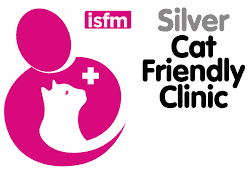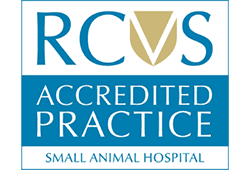At Kentdale Referrals, our Specialist-led team have access to a range of diagnostic imaging modalities to support in reaching a rapid and accurate diagnosis to help ensure the optimal treatment is selected allowing better patient outcomes. Images can be viewed on any computer in the hospital. This not only allows us to view them in theatre but also in our consulting rooms for clients to view.
Radiography
We have a high-definition Fuji Prima II CR system radiography system. This provides us with excellent images of the very highest quality.
Computed Tomography (CT)
CT is an advanced imaging method that uses X-rays to produce multiple thin image slices of the body. After the scan has been performed the images can be manipulated using computer programs that can restack and recut the slices in any direction, or even produce three-dimensional pictures. Our team primarily use CT to help diagnose joint and spinal problems without resorting to invasive exploratory surgery, however, the ability to look at three-dimensional images is also very useful in planning surgery for complex fractures and limb deformities.
As part of our commitment to providing patients, clients and referring vets with the best possible care, we have invested and installed a new, state-of-the-art 32-slice GE Fixed Revolution ACT, a high-specification CT scanner, which will ensure that Kentdale stays at the forefront of the veterinary industry.
Our Specialist-led team utilise the scanner to provide exceptional levels of image quality, with the ability to capture multiple slices simultaneously, guaranteeing patient safety and accurate diagnosis.
CT is especially useful to help investigate and assess the following conditions:
· Contrast studies: CT contrast urography, portosystemic shunts
· ENT: middle ear disease, nasal disease
· Orthopaedic: elbow dysplasia, bone pathology, neoplasia, osteomyelitis, 3D reconstructions
· Oncology: staging of neoplasia and as an aid to planning surgical interventions.
Advanced Imaging - CT
At Kentdale Referrals, we provide access to CT imaging via two different referral routes. 'Advanced Imaging Referral' or an 'Outpatient - Imaging Only Referral'.
Advanced Imaging Referral: This is a referral to see one of our Specialists. The patient will be taken into our care and treated as deemed appropriate by our team.
Outpatient Imaging Only: The patient is assessed for fitness to have sedation/GA. The areas imaged are completed exactly as requested and sent back to you for further treatment. Copies of the images taken and the report from Antech Imaging Services will be forwarded to you after the appointment.
While ‘imaging only’ scans are available, we strongly advise an ‘imaging and report’ service, which includes a comprehensive written report by a Specialist in Diagnostic Imaging (Antech Imaging Services).
Our team are happy to discuss with you which type of scan would be most suitable for your patient and the clinical condition being investigated.
Accessing Kentdale Outpatient Imaging Service
Our outpatient imaging service will be available every Thursday and is operated by Indre Petrauske, Surgical Intern and supported by our dedicated team of RVNs.
Should you have an imaging request outside of these times, please contact our team on 015395 67241 who will be happy to discuss availability with you on a case-by-case basis.
Magnetic Resonance Imaging (MRI)
Magnetic resonance imaging is a state-of-the-art imaging method that uses a strong magnetic field to produce image slices of the body. We work in conjunction with Burgess Diagnostics, the UK leader in mobile advanced imaging for the veterinary market who visit fortnightly with a 1.5 Tesla MRI scanner. MRI is the imaging modality of choice for patients with brain or spinal cord disease. It is a very versatile technique that can be used to produce images of any body tissues including when assessing for musculoskeletal diseases.
Ultrasound
We have high-end ultrasound imaging facilities on site. This allows real-time imaging of the thorax and abdomen.











